Growing gladioli is a very interesting and painstaking process. All stages of planting and care must be carried out according to certain rules, taking into account the characteristics and requirements of the flowering crop.With proper preparation and planting work, as well as regular and timely care, capricious gladioli bloom magnificently and for a long time, delighting with a large number of large and beautiful inflorescences. This article explains how to grow these popular plants among flower lovers.
| Content:
|
|
Try not to grow gladioli in one place all the time; from time to time, replant them in other flower beds. Crop rotation is loved not only by vegetables, but also by flowers. |
Preparing bulbs for planting
Approximately thirty to thirty-five days before planting gladioli bulbs in open ground, preparatory activities begin, which consist of several important stages.
- Each specimen is cleaned of old exfoliated upper scales and carefully examined for signs of diseases of various origins. It is recommended to clean the babies closer to the planting day, as they dry out faster.
- If darkened areas or rotten spots are found on the surface of the bulbs, they are stripped to healthy tissue using a clean knife.
- The cleaned areas on the corms are sprinkled with activated carbon powder or lubricated with brilliant green, after which they are removed separately from healthy planting material.
- It is not recommended to plant bulbs completely affected by the disease, as they can infect other crops.
- In order to prevent pests and diseases, all planting material is treated with disinfecting solutions before planting in the ground. You can soak the bulbs in a weak manganese solution (for one or two hours) or in a solution based on the preparations “Fundazol”, “Maxim”, “Fitosporin” (for half an hour).
- For germination, the material is placed in a warm and bright place with the buds facing up. After about fifteen to twenty days, the height of the sprout will be from three to seven centimeters.
All. Germinated and disinfected gladioli corms are ready for planting in open ground.
On a note! If a sprout does not appear on the planting material within two weeks, there is no need to use it. Such bulbs are not viable and it will not be possible to grow beautiful flowers from them.
Which bulbs to choose for planting
Every gardener dreams of flowering being abundant, long and bright.
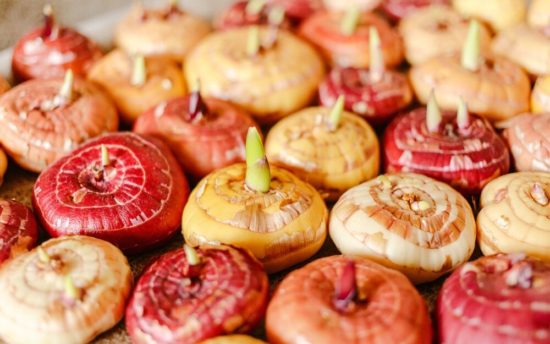
For the full development of the culture and a large number of inflorescences in the future, it is necessary to choose the right planting material, taking into account some features and nuances.
|
When is the best time to plant gladioli?
Gladioli are lovers of sunlight and warmth. For planting, it is recommended to choose a warm day with stable, warm air temperatures. The soil should be well heated for several days, its optimal temperature is from ten to fifteen degrees. In different regions, the planting date will differ, but the period from early April to early June is considered favorable.
For example:
- in Moscow and the Moscow region - from the third ten days of April to mid-May;
- in Siberia and the Urals - from mid-May to early June;
- in the southern regions - from the third ten days of March to mid-April.
|
Gladioli bulbs can be planted in open ground in spring when the soil at a depth of 10 cm is at least +10º C |
Attention! Planting gladioli bulbs in cold soil will cause them to rot and die.
Where is the best place to plant gladioli?
- It is recommended to choose an area for planting gladioli that is open, sunny, protected from drafts and cold winds, preferably on a slight hill or on a sloped area. Groundwater must be at great depth. You can use areas along hedges and fences, as well as areas around buildings. Gladioli are not suitable for low-lying and wetlands with excess soil moisture.
- The soil for gladioli needs to be nutritious, moderately moist, with an average level of acidity. Plants will be most comfortable on chernozems, light loams and sandy loams, with good drainage. When digging into acidic soil, for each square meter it is necessary to add about two hundred grams of dolomite flour or chalk, into light sandy soil - rotted humus (compost) and clay, and into heavy clay soil - sand.
When preparing the soil in autumn, digging is carried out, simultaneously feeding the soil with mineral fertilizers. For every meter - one hundred grams of superphosphate and thirty grams of potassium. In spring it is necessary to thoroughly loosen the soil.
|
Taking into account predecessors also has a positive effect on the future growth and development of swordfish. For example, good precursors are berry plants, tomatoes, peas and beans, marigolds and various perennial herbs. But it is not recommended to grow gladioli after various root vegetables and aster varieties. |
The depth of the planting holes or grooves is from ten to fifteen centimeters. They are first watered generously with plain water or Fitosporin solution, after which a layer of sand and sphagnum moss about three centimeters thick each is poured onto the bottom. The interval between planting holes is about twenty-five to thirty centimeters, the row spacing is from forty to fifty centimeters.
An interesting video about planting gladioli bulbs in the ground in the spring:
Planting gladioli
The bulbs are placed in the prepared holes or furrows, deepening them to eight to fifteen centimeters, depending on their size. Small specimens - to a depth of eight to ten centimeters, large ones - about fifteen centimeters. Carry out the first watering with water at room temperature. The sprout should stick out from the ground a couple of millimeters.
The top of the planting is sprinkled with a layer of sawdust. To speed up the germination of tubers, the beds are covered with greenhouse plastic film. As soon as green sprouts appear on the surface of the soil, the shelter is immediately removed.
Gladioli care
The most important elements of caring for gladioli are watering and fertilizing.
How to water gladioli correctly
The irrigation regime has its own characteristics and rules that must be followed.
- It is recommended to water the gladioli for the first time when the height of the green sprouts reaches nine to ten centimeters.
- The frequency of watering depends on the air temperature. During rainy periods, you can not water the flowers at all or water them once a week if the rainfall is not heavy. On hot, dry days, plants require more moisture, so the frequency of watering is at least four to five times a week in moderate volumes.
- Irrigation water should be warm, preferably settled.
- The optimal volume is about one bucket (8 - 10 liters) per square meter.
- Water should not fall on the leaves of gladioli, so it is recommended to apply it not under the flower bush, but into specially prepared grooves between the plants. The depth of the grooves is from three to five centimeters.
- The best time for water procedures is the evening after sunset or early morning.
How to plant gladioli babies in open ground video:
Feeding gladioli
Gladioli need fertilizers and fertilizing throughout almost the entire period of development and growth, from the appearance of young leaves to the last inflorescence. They are applied regularly, in small volumes, along with irrigation water. The brightness and splendor of the inflorescences, the number of buds and the duration of the flowering period depend on the timeliness of their application. Experienced gardeners advise using root and foliar, organic and mineral fertilizers.
- At the stage of formation of the first three leaves, gladioli are fertilized with compounds containing nitrogen. You can add twenty-five grams of one of the preparations to the soil - ammonium sulfate, ammonium nitrate or urea.
- After the appearance of the sixth leaf, the plants will need a complex composition with nitrogen, potassium and phosphorus. Twenty grams of superphosphate, ammonium sulfate and potassium chloride are added to each meter of land.
- During the period of bud formation and the appearance of flower stalks, gladioli must be fed with superphosphate and potassium chloride (40 and 20 grams, respectively).
- Throughout the entire period of plant development, liquid organic matter can be added (at intervals of two weeks). First, an infusion is prepared from three liters of bird droppings and five liters of water, infused for ten to fifteen days, diluted with water in a ratio of 1 to 10 and poured between the plants into the prepared grooves.
- Foliar feeding promotes earlier flowering and increased decorativeness. For spraying, prepare a solution of two grams of copper sulfate and one liter of water, ten grams of boric acid and one liter of water. You can use a one percent manganese solution.
Reference! Mineral fertilizers are applied until mid-August at intervals of two to two and a half weeks. The number of foliar feedings is no more than three per season. You can add a small amount of liquid laundry soap to them. Organic fertilizers can be alternated with mineral ones.
All about planting and caring for gladioli:
Garter of tall varieties
The stems and peduncles of gladioli are juicy, fleshy and weighty. Tall varieties that exceed the mark of one hundred centimeters may not withstand their own weight and break. For this purpose, gardeners use various garter methods.
|
You can use regular wooden pegs and twine. Or a wire or rope stretched between two posts (between rows of plants). |
Soil care
The soil in a flower garden or bed with gladioli must be loosened and weeded regularly. Weeding is carried out once or twice a month, especially at the initial stage of growth, so that weeds do not choke the development of sprouts that have not yet matured. It is recommended to loosen the soil after each moistening to a depth of five to six centimeters. After loosening - hilling with dry soil.
Important! The amount of weeding and loosening will be minimal if the surface around the gladioli is mulched with cut grass, compost, humus, peat or straw. Mulch will protect the soil from overheating and maintain moderate humidity for a long time.
Cut flowers
To form flower arrangements, the arrows of gladioli with flowers are carefully broken off at the very base. You can also use scissors or pruners, but be sure to disinfect them. It is advisable to carry out cutting in the early morning, then the plants will remain fresh and attractive longer.
|
Bouquets retain their decorative value when placed in a container with water for ten days or more. |
To prevent flower crops from wasting their energy on forming seeds, it is necessary to promptly remove faded and wilted buds.
Prevention and treatment of diseases and pests
Gladioli diseases
Unfortunately, gladioli are very vulnerable to many diseases. Each of them has its own signs and reasons for its appearance.
Septoria develops in areas with acidic soil and high humidity. The disease first affects the leaves, then the inflorescences and finally reaches the bulbs. Affected plants are removed from the ground and destroyed away from other crops.
Fusarium – a fungal disease that causes stunting of growth, bending of flower stalks and yellowing of leaves. The bulbs become red-brown in color, with individual darker spots. There are no treatment methods.
Botrytiosis occurs against a background of prolonged coolness and dampness. Leaf plates, flowers, stems and root parts gradually die off.
Ring spot and viral mosaic spread by insect pests. All diseased crops are immediately destroyed.
Root cancer - a bacterial disease that affects the bulbs.
Preventive measures are very simple and mandatory. They will help protect gladioli from various diseases and prevent their development. The most important thing is competent and thorough preparation of the bulbs for storage and planting. It is necessary to carefully perform each stage - sorting, processing, drying, disinfection. It is also of great importance where and under what conditions the planting material was stored.
To prevent diseases, it is worth using special preparations - Bordeaux mixture, Nitrofen, Karbofos, Fundazol, Potassium permanganate, copper oxychloride.
Pests
The most common pests are thrips and root mites. Before planting in open ground, gladioli bulbs must be treated with powdered insecticides (for example, Konfidor, Aktara). When uninvited guests invade, the soil is sprayed with Karbofos or spilled with insecticides, and the affected bulb is destroyed. Pests are destroyed using special chemicals: Hom, Maxim, Actellik, Inta-vir.
What to do with gladioli after flowering
When to dig up bulbs
Tubers are harvested thirty to forty days after flowering ends.They are dug out with a fork or shovel, along with a lump of earth, so that the children do not remain in the soil.
|
For cleaning, choose a dry, sunny day. The stems are trimmed, leaving stumps two to three centimeters high. |
Don't forget to read:
Read more about when and how to properly dig up gladioli in the fall here ⇒
Bulb processing
After separating the children and bulbs, sorting by variety and health status, disinfection treatment is carried out. First, all the bulbs are thoroughly washed with plain water, then placed in a container with a solution of potassium permanganate or Fundazol, then proceed to drying.
Drying
Drying is carried out in several stages and at different temperatures. For several days, the gladioli bulbs are left in the open air, or rather in the sun. At night, the tubers are kept in a warm room. Then for fifteen to twenty days at a temperature of about twenty-five degrees and the same amount at twenty to twenty-two degrees.
Where to store bulbs in winter
For winter storage of bulbs, you can use wooden or cardboard boxes. The tubers are laid out in one layer so that they do not touch each other.
|
You can store planting material in the apartment, in the basement or cellar, on the balcony, in the attic and in the refrigerator. |
Do not miss:
How to properly prepare gladioli bulbs for winter storage and how to preserve them until spring ⇒
Varieties of gladioli
Polar bear
|
In the photo there is a gladiolus “Polar Bear” |
Dmitry Solunsky
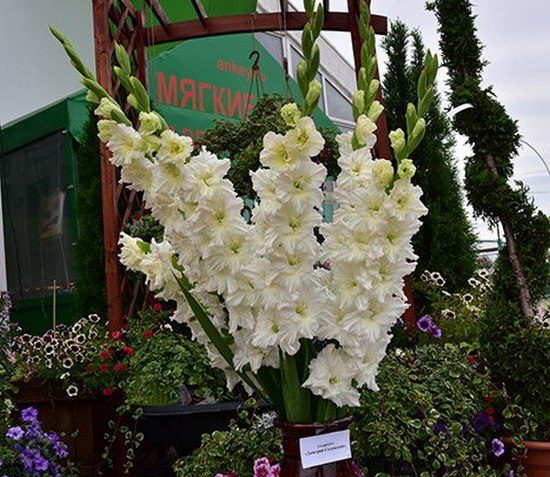
Dmitry Solunsky |
White angel
|
White angel |
Ajax
|
Ajax in the photo |
Mother Winter
|
Mother Winter |
Moscow white stone
|
In the photo there is a white variety of gladiolus “Moscow White Stone” |
And again Malika
|
In the photo there is a variety with an interesting name “And Malika again” |
Madagascar
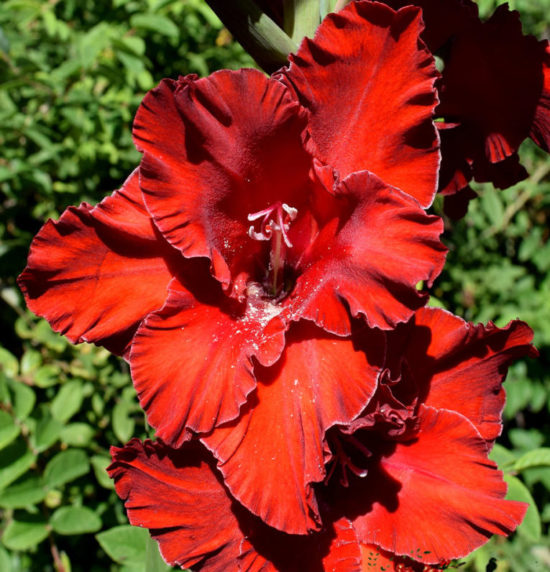
Madagascar |
Sparkler
|
Pink variety "Bengal fire" |
Annushka
|
Very beautiful variety “Annushka” |
Eternal romance
|
Eternal romance |
Margarita
|
Margarita |
Canary solo
|
The photo shows one of the most beautiful gladioli “Solo Canary” |
Gifts of Berendey
|
Green variety “Gifts of Berendey” |
Peacock feather
|
In the photo is the variety “Peacock Feather” |
Admiral Ushakov
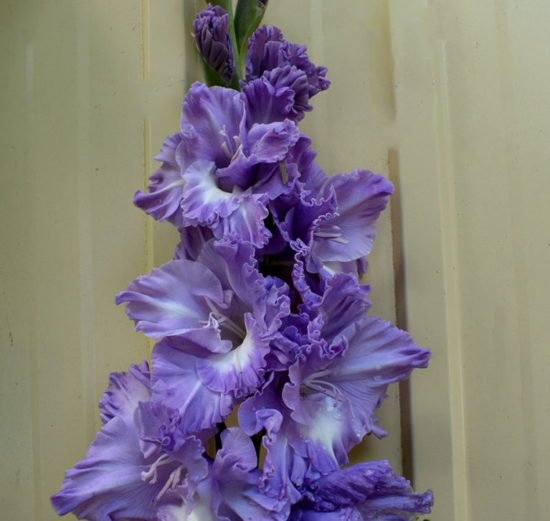
Admiral Ushakov |
Do not miss:
See even more varieties of gladioli with detailed descriptions and characteristics here ⇒
Conclusion
Growing majestic flowers is within the power of every amateur gardener. But strong and beautiful gladioli will grow only if all planting requirements are met, with careful care and patience.
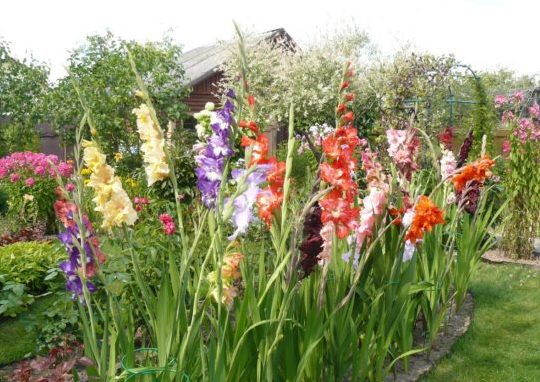
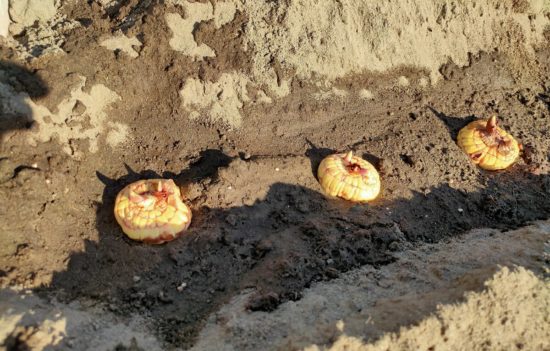
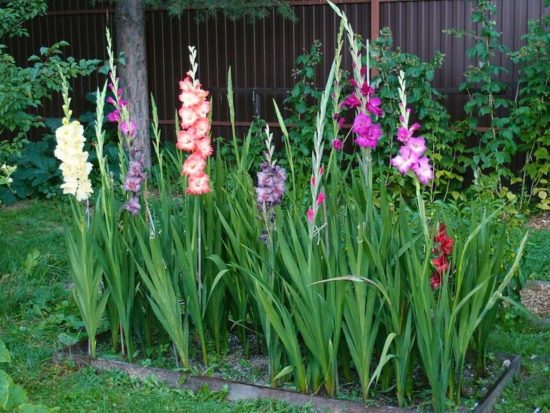
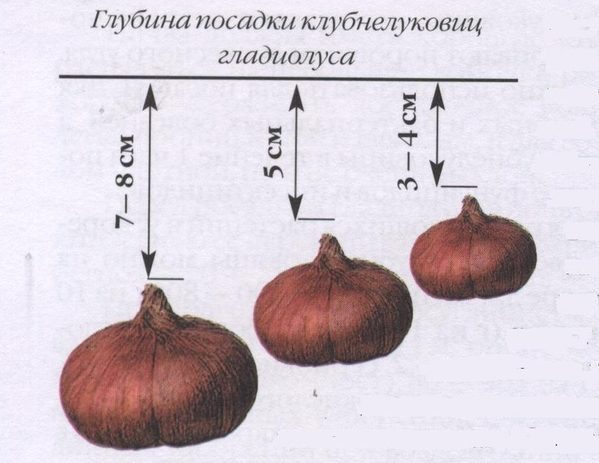

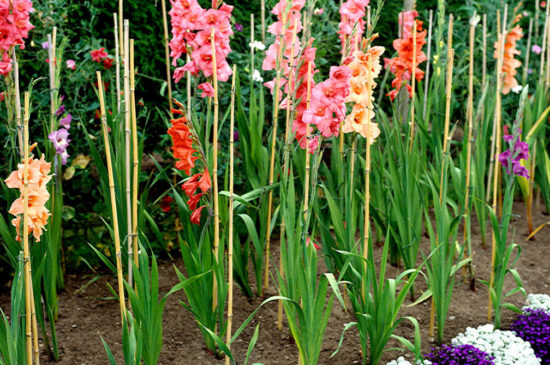
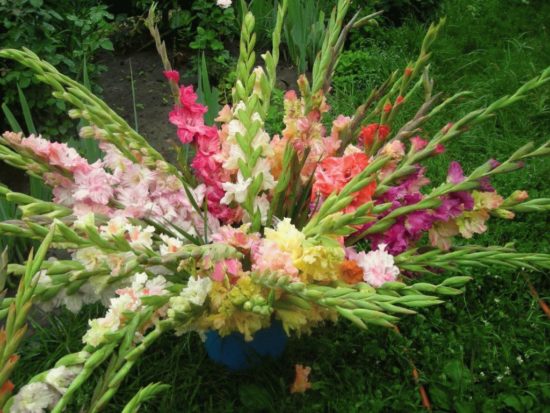
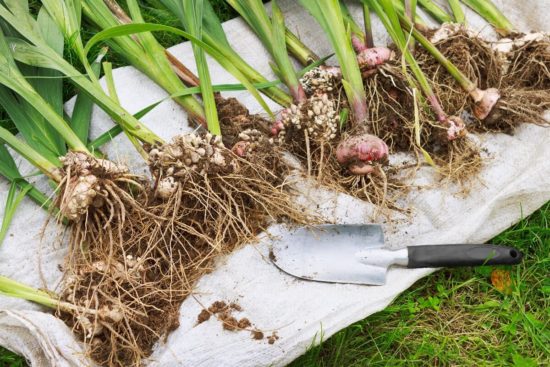
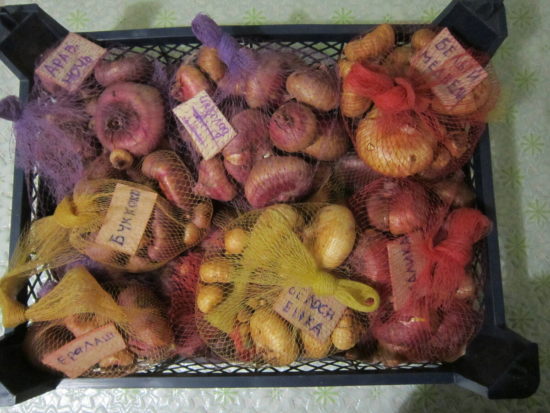
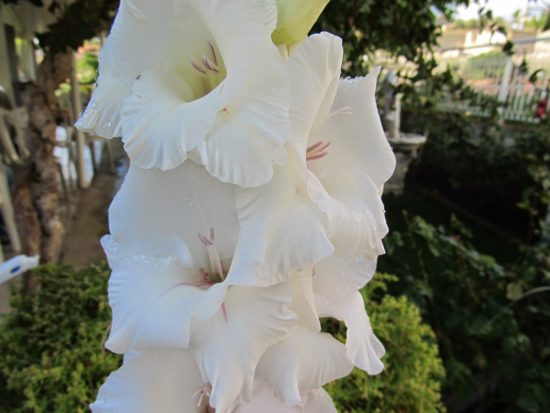
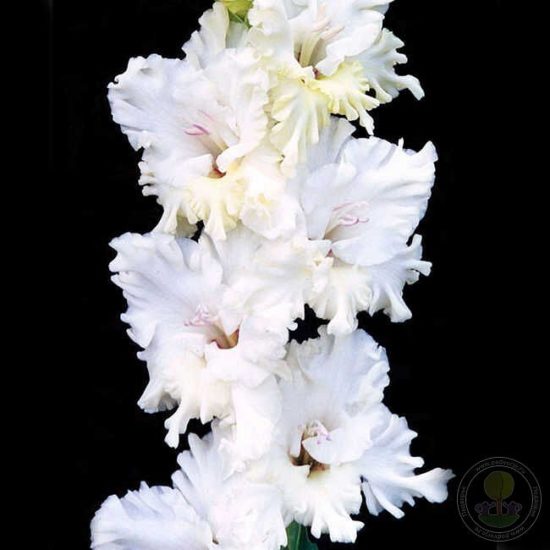
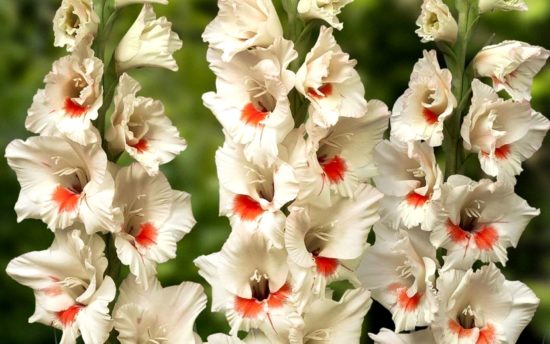
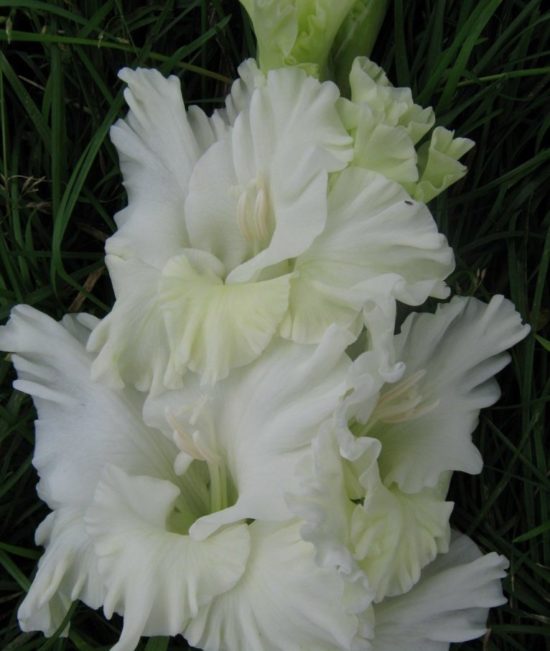
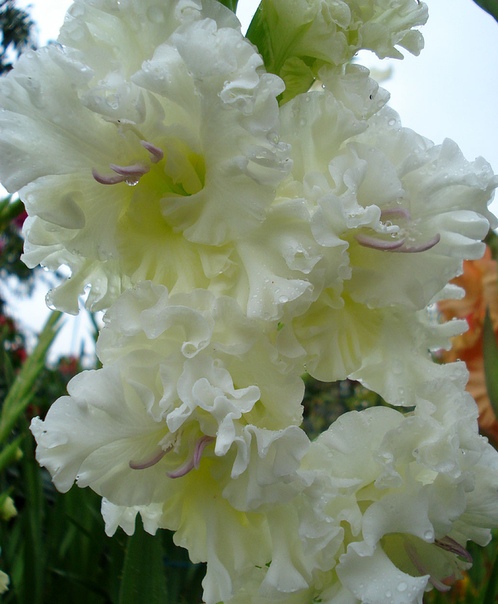
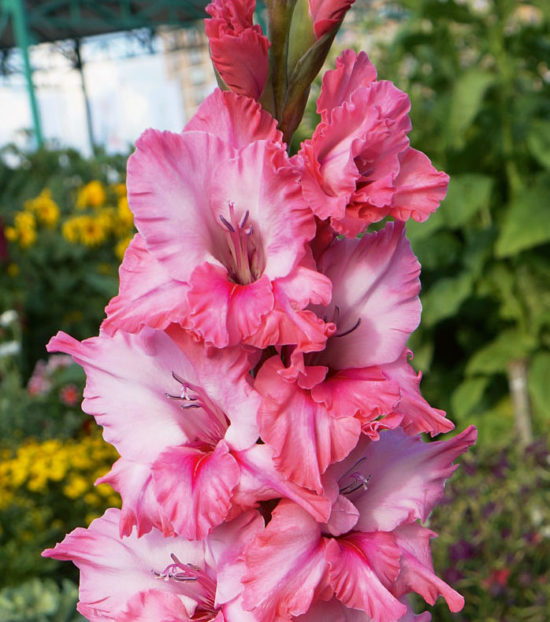
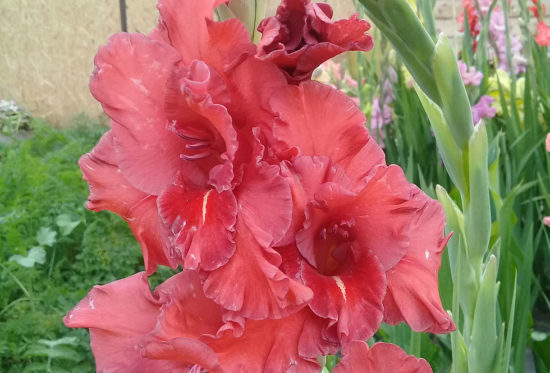
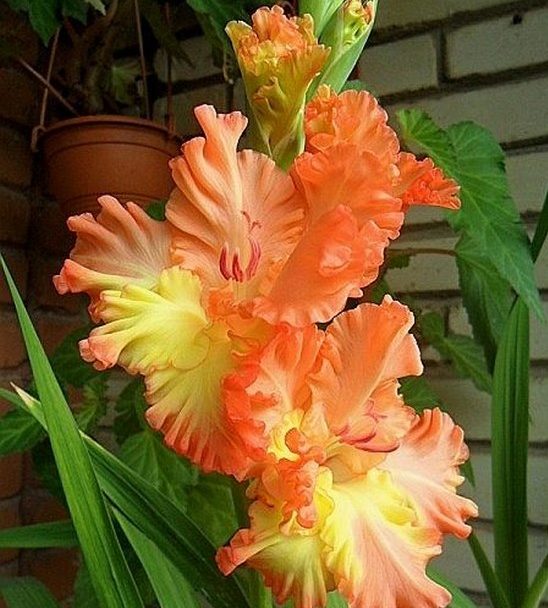

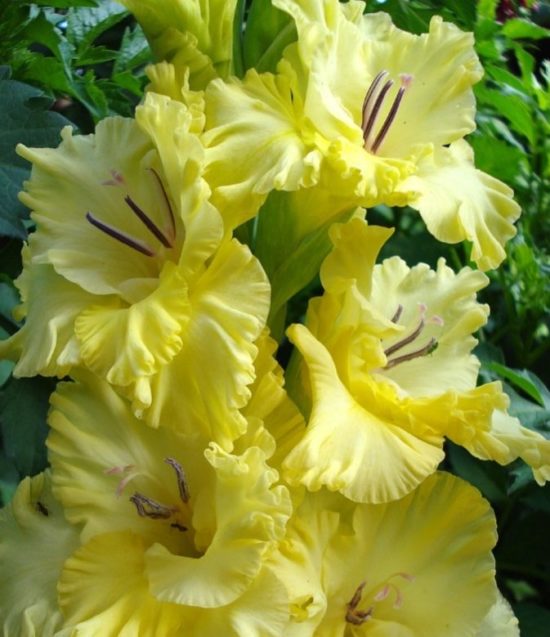
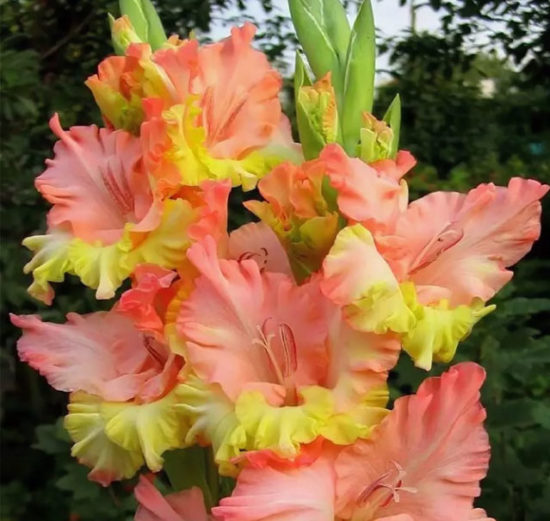
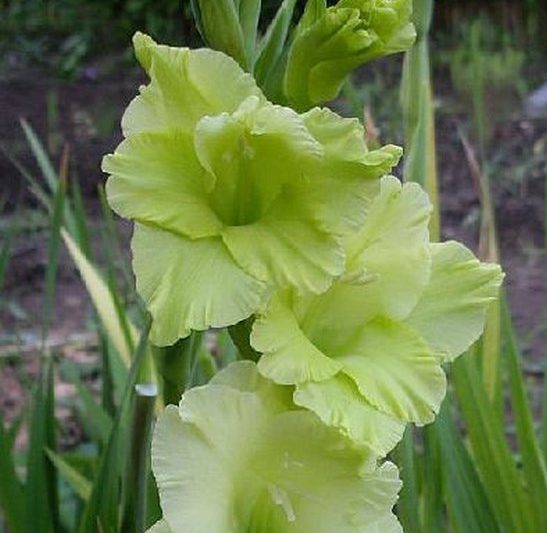
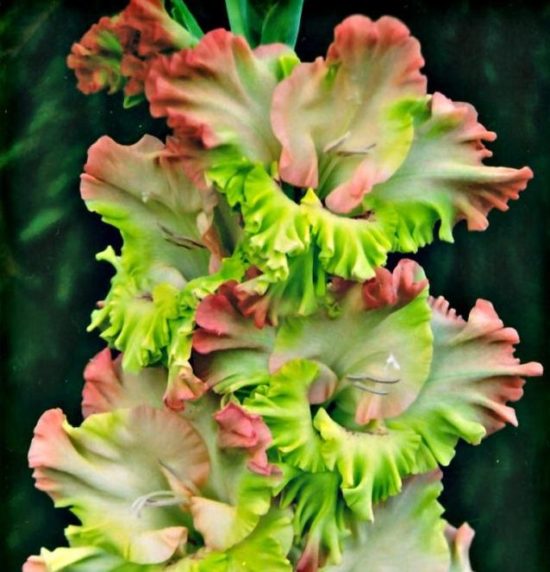

 CUCUMBERS NEVER GET SICK, I'VE BEEN USING ONLY THIS FOR 40 YEARS! I SHARE A SECRET WITH YOU, CUCUMBERS ARE LIKE THE PICTURE!
CUCUMBERS NEVER GET SICK, I'VE BEEN USING ONLY THIS FOR 40 YEARS! I SHARE A SECRET WITH YOU, CUCUMBERS ARE LIKE THE PICTURE! You can dig a bucket of potatoes from each bush. Do you think these are fairy tales? Watch the video
You can dig a bucket of potatoes from each bush. Do you think these are fairy tales? Watch the video
 How our fellow gardeners work in Korea. There is a lot to learn and just fun to watch.
How our fellow gardeners work in Korea. There is a lot to learn and just fun to watch. Eye trainer. The author claims that with daily viewing, vision is restored. They don't charge money for views.
Eye trainer. The author claims that with daily viewing, vision is restored. They don't charge money for views. A 3-ingredient cake recipe in 30 minutes is better than Napoleon. Simple and very tasty.
A 3-ingredient cake recipe in 30 minutes is better than Napoleon. Simple and very tasty. Therapeutic exercises for cervical osteochondrosis. A complete set of exercises.
Therapeutic exercises for cervical osteochondrosis. A complete set of exercises. Which indoor plants match your zodiac sign?
Which indoor plants match your zodiac sign? What about them? Excursion to German dachas.
What about them? Excursion to German dachas.